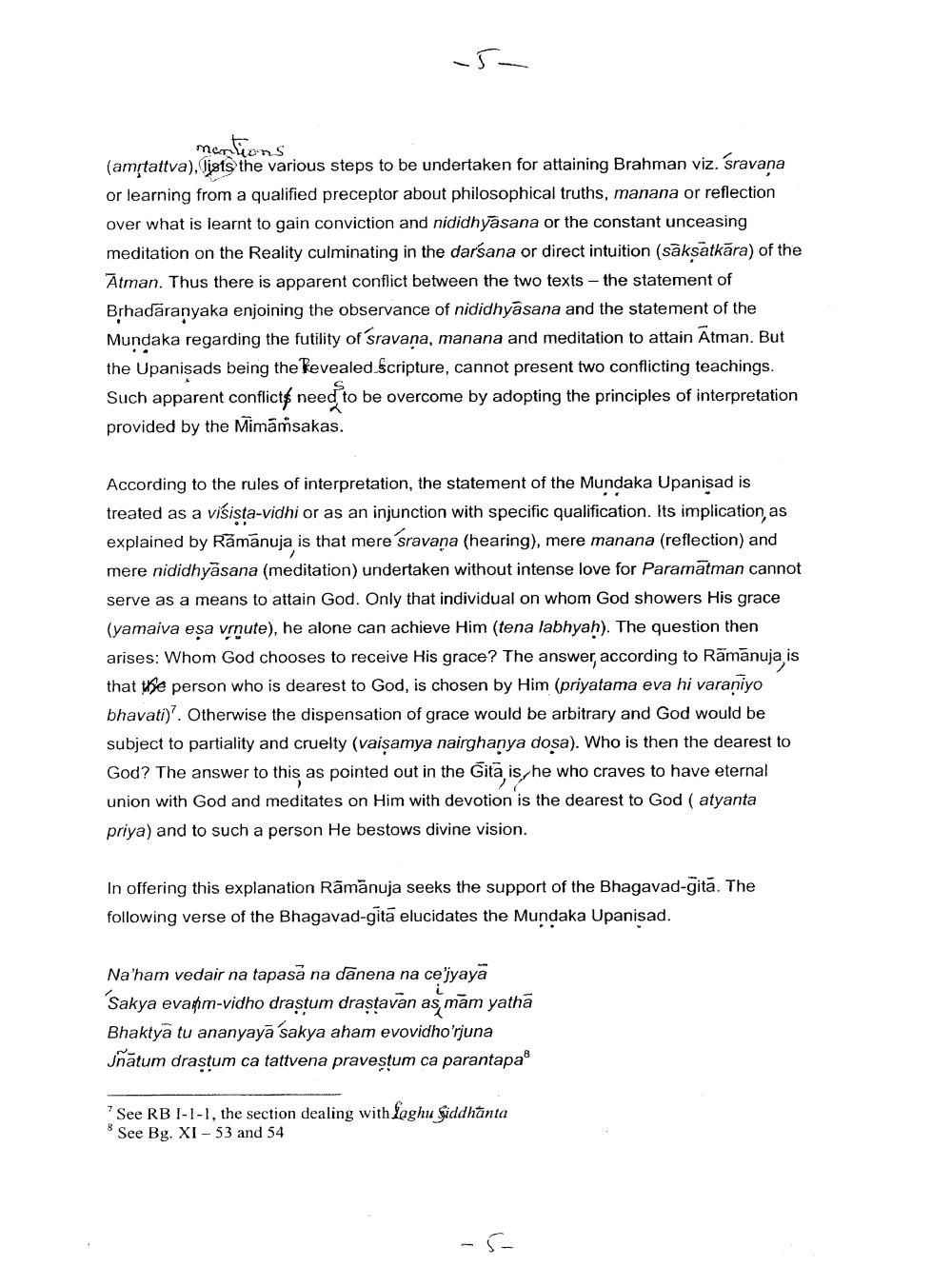Book Title: Synthesis of Yoga in Vaisnavism of Ramanuja Author(s): Publisher: View full book textPage 5
________________ mentions (amrtattva), lists the various steps to be undertaken for attaining Brahman viz. sravana or learning from a qualified preceptor about philosophical truths, manana or reflection over what is learnt to gain conviction and nididhyasana or the constant unceasing meditation on the Reality culminating in the darsana or direct intuition (saksatkara) of the Atman. Thus there is apparent conflict between the two texts - the statement of Brhadaranyaka enjoining the observance of nididhyasana and the statement of the Mundaka regarding the futility of sravana, manana and meditation to attain Atman. But the Upanisads being the kevealed_scripture, cannot present two conflicting teachings. Such apparent conflicts need to be overcome by adopting the principles of interpretation provided by the Mimansakas. According to the rules of interpretation, the statement of the Mundaka Upanisad is treated as a visista-vidhi or as an injunction with specific qualification. Its implication as explained by Ramanuja is that mere sravana (hearing), mere manana (reflection) and mere nididhyasana (meditation) undertaken without intense love for Paramatman cannot serve as a means to attain God. Only that individual on whom God showers His grace (yamaiva esa vrnute), he alone can achieve Him (tena labhyah). The question then arises: Whom God chooses to receive His grace? The answer, according to Ramanuja is that the person who is dearest to God, is chosen by Him (priyatama eva hi varaniyo bhavati). Otherwise the dispensation of grace would be arbitrary and God would be subject to partiality and cruelty (vaisamya nairghanya dosa). Who is then the dearest to God? The answer to this as pointed out in the Gita is, he who craves to have eternal union with God and meditates on Him with devotion is the dearest to God ( atyanta priya) and to such a person He bestows divine vision. In offering this explanation Ramanuja seeks the support of the Bhagavad-gita. The following verse of the Bhagavad-gita elucidates the Mundaka Upanisad. Naham vedair na tapasa na danena na ce'iyaya Sakya eva m-vidho drastum drastavan as mam yatha Bhaktya tu ananyaya sakya aham evovidho'rjuna Jnatum drastum ca tattvena pravestum ca parantapa See RB 1-1-1, the section dealing with faghu Siddhanta * See Bg. XI - 53 and 54Page Navigation
1 ... 3 4 5 6 7 8 9 10 11 12 13 14 15 16 17 18 19 20 21 22 23
